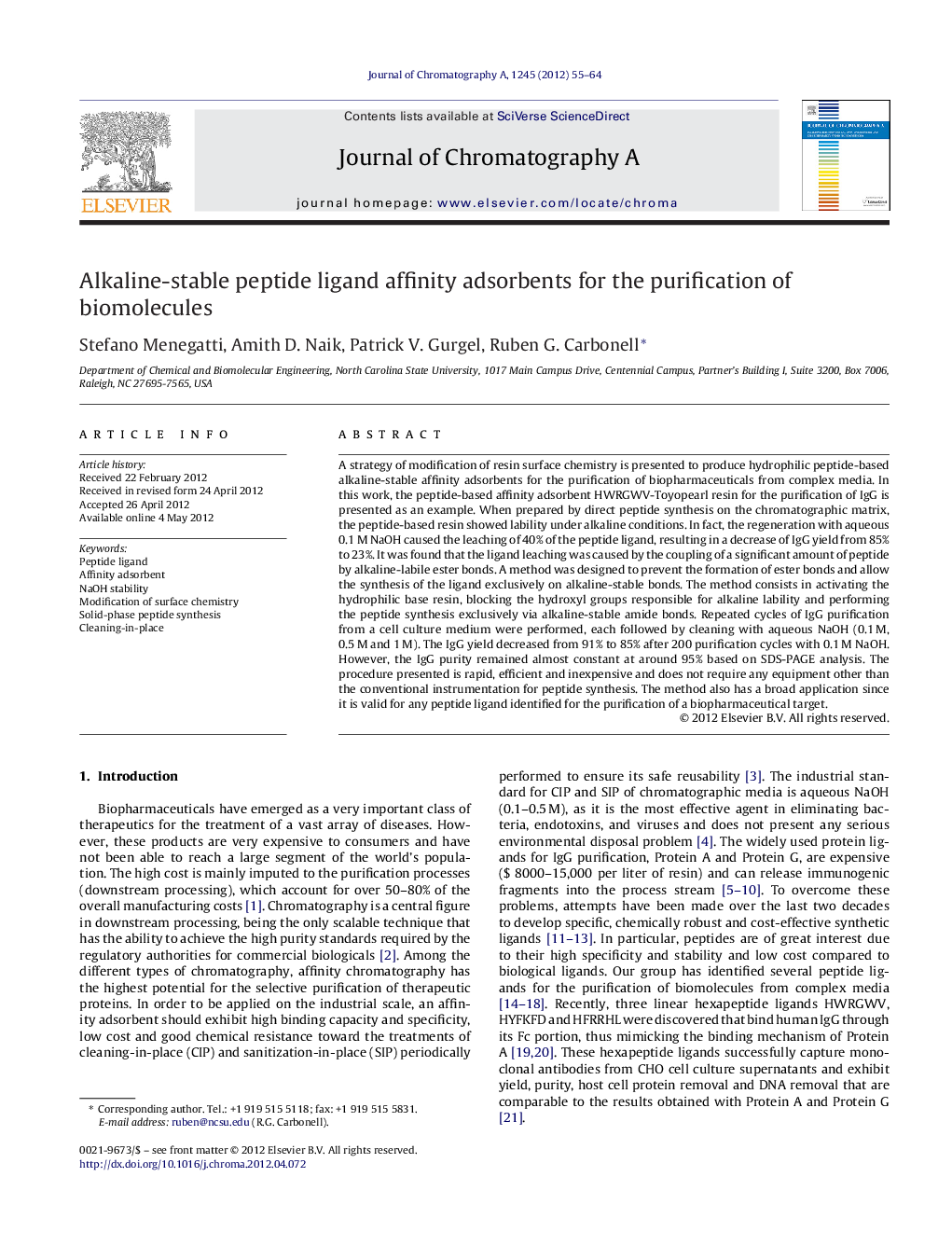| Article ID | Journal | Published Year | Pages | File Type |
|---|---|---|---|---|
| 1202558 | Journal of Chromatography A | 2012 | 10 Pages |
A strategy of modification of resin surface chemistry is presented to produce hydrophilic peptide-based alkaline-stable affinity adsorbents for the purification of biopharmaceuticals from complex media. In this work, the peptide-based affinity adsorbent HWRGWV-Toyopearl resin for the purification of IgG is presented as an example. When prepared by direct peptide synthesis on the chromatographic matrix, the peptide-based resin showed lability under alkaline conditions. In fact, the regeneration with aqueous 0.1 M NaOH caused the leaching of 40% of the peptide ligand, resulting in a decrease of IgG yield from 85% to 23%. It was found that the ligand leaching was caused by the coupling of a significant amount of peptide by alkaline-labile ester bonds. A method was designed to prevent the formation of ester bonds and allow the synthesis of the ligand exclusively on alkaline-stable bonds. The method consists in activating the hydrophilic base resin, blocking the hydroxyl groups responsible for alkaline lability and performing the peptide synthesis exclusively via alkaline-stable amide bonds. Repeated cycles of IgG purification from a cell culture medium were performed, each followed by cleaning with aqueous NaOH (0.1 M, 0.5 M and 1 M). The IgG yield decreased from 91% to 85% after 200 purification cycles with 0.1 M NaOH. However, the IgG purity remained almost constant at around 95% based on SDS-PAGE analysis. The procedure presented is rapid, efficient and inexpensive and does not require any equipment other than the conventional instrumentation for peptide synthesis. The method also has a broad application since it is valid for any peptide ligand identified for the purification of a biopharmaceutical target.
► The paper shows the development of a peptide-based ligand with alkaline stability. ► The procedure allows the adsorbent to withstand high pH cleaning and regeneration. ► The ligand remains effective over a large number of regeneration cycles. ► An application is shown using a peptide ligand for purification of IgG.
